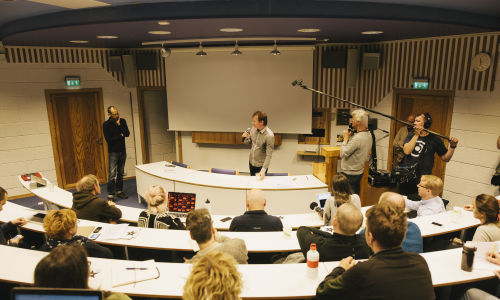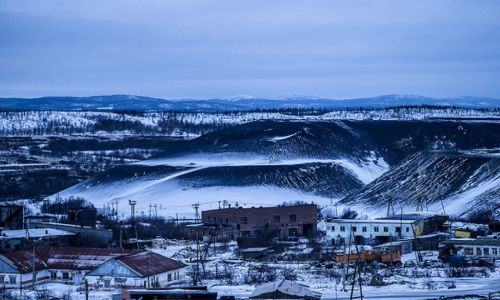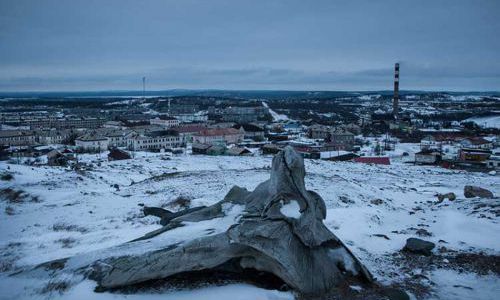Arctic traverses – Atmospheric Heritage
Judith van der Elst
Walking. Traversing the land in the Arctic and Sub-Arctic, lichen underfoot, no tree in sight. Did PreCambrium land look like this?

The appearance of fungi and plants millions of years ago resulted in a rise in percentage of oxygen in the Earth atmosphere, and lichens are believed to have been the first fungi to team with photosynthesizing organisms that made this, and life on Earth possible (Hedger et.al). Walking through the Arctic/sub-Arctic landscape feels like the edge of our world, a place where life is, or seems emerging and fresh (www.hedgeslab.org) .
In September 2015 I participated in the Hybrid Matters Field notes workshop as part of the Seven Senses on the Land (SSOTL) group. The workshop, organized by BioArt Society was held at the Biological Fieldstation in Kilpisjärvi, Finland. The initial work of the SSOTL group, led by Marko Peljhan, Matthew Biederman, and Leena Valkeapää, comprised drone mapping of cross-border vegetation patterns, working towards different ways to address the problem of restricted movement of reindeer herds, dictated by geopolitical forces. The seventh sense refers to new technologies with which we can go beyond the human sensing range.
From Oula Valkeapää (Leena’s partner), who is a Sami reindeer herder in this region, we learn that traditionally/naturally the reindeer move to summer lands in present day Norway and return to Finland during the winter. During their migration, the reindeer forage on different foods available in the different seasons, and in winter they feed on lichen from the trees or from the ground beneath the snow cover. Their sense of smell guides them in the darkness, through the snow. Nowadays, it is no longer possible for Oula and other herders in this region to take the herd across the Finnish-Norwegian border and the reindeer’s natural habitat is truncated.
Being able to experience this incredible landscape in the Arctic region in which the biological field station is located, makes you aware of the human adaptations to the unique spatiotemporal patterns: the light and the dark, the dynamic of geophysical, biological and atmospheric processes, creating color spectacles and ‘scented trails’ to navigate the darkness during the winter months. The close relationship between ‘man and animal’ allows humans to sustain themselves in circumpolar landscapes, which is now impacted in multiple ways.
One year later I return. Even though I am only one week later in the season, the landscape is very different from last year, the intense autumn colors are already replaced by frosted vegetation and snow capped mountaintops. My travel to Kilpisjärvi is a project in itself, exploring the trail from Norway to Finland. I am curious about the trail that was traditionally taken to summer pastures in an effort and wish to continue my work on sensory stimuli as critical sources of knowledge and communication. Trying to understand communication between and among organisms (biosemiotics), health and aesthetic experience and explore new ways to expand or re-learn our sensing limitations.
Interfaces
As humans we physically connect to the Earth’s surface mostly through the soles of our feet. With the remainder of our bodies we are in touch with the Earth’s atmosphere through our skin. This sphere, the atmospheric boundary layer in which we move around, is incredibly dynamic and holds for instance the magnetic shield that protects us from harmful cosmic rays. At either pole, the deflected rays spiral around where they ionize atoms and recombine with electrons to give of light, visible to us as spectacular colored swirls, the Auroras. So maybe the atmospheric boundary layer is also an interface of sorts, ‘translating’ cosmic energy into interpretable patterns and resources. The arctic environment around our current north pole is particularly sensitive. Light and temperature patterns result in a short growing season, creating a surface layer of wetlands, rocks and rock covered with lichen, a delicate forest underfoot, most of the year covered in snow.
The present day (forced) change in Sami lifestyle at is not the only thing that is changing in the Artic region. Even though the landscape looks wild, unspoiled and desolate, the Artic region is severely impacted by human induced climate change. The complexity of climate feedbacks are difficult to understand, yet it is already known that the Arctic is extremely sensitive to climate change and a “major receptor region for long range transport of both persistent organic pollutants (POP’s) and mercury (Hg) which can accumulate particularly in the Arctic environment due to low temperatures, snow covered surfaces and extended conditions of darkness. Air pollution, it turns out, is a major driver of climate change in the Arctic; toxic substances arrive and settle at ‘lung’ level from sources far outside the region, especially during dark times (Arnold et.al, 2016)
Atmospheric heritage – understanding ephemeral relationships that connect us all
I am trained as an archaeologist and to work as an archaeologist means using a myriad of methods for understanding human-land relationships and changes in the land: rainfall patterns that can be ‘read’ from tree-rings; determining the age of organic material by using the properties (half-life) of a radioactive carbon isotope, to name a few. We mostly stick our head in the sand, literally. What I have learned though over the years is that the ephemeral qualities and (their) flow are crucial principles in spatial thinking of many human groups, underpinning design of the human sphere through time. It is now more important than ever to pay attention to life sustaining flow, spirit, breath or whatever names we can give it.
The oscillating patterns of the materials mediated by the flow within and among organisms, between organisms and their surrounding, permeate and connect. Some of these patterns have left their mark in the land; striations in the arctic rock are a remnant of ancient wind forces. Others are more difficult to understand from our current perspectives, but new fields such as biosemiotics, biochronology, biometeorology and bioart offer portals to transcend conventional boundaries, intellectually and technologically. For instance, the light-dark cycle is one of the main biological Zeitgeber. In the Arctic, this pattern is at its extreme, creating unique ecosystems and interactions. It also deviates from the human internal diurnal pattern. To better understand how the changing atmosphere influences the mind, I set out to explore ‘embodied information gathering’, starting in the Arctic desert.
From a distance or in a photograph this land looks smooth, but hiking across it turned out to be much harder than anticipated, demanding careful attention of where to place the feet, to avoid sliding, slipping and sinking into the ground. The surrounding air feels good though, and the only sounds I am consciously aware of are the gurgling sounds of running water across and sub-surface. Aware that while moving through this vast landscape communication takes place at all times. Aware that the lichen that cover the surface are engaged in a similar activity, taking up and emitting chemical compounds from the ambient sphere to survive. Connecting the human with the lichen is the reindeer.
Sight however may be deceptive, recent research shows that the chemical substance of the surrounding sphere is likely contaminated and I begin to wonder if I can still find uncontaminated air, air that is made life possible and incredible potent. The idea of TOP AIR fills my head as I set out to go in search for lost air as my new archaeology endeavor to develop sensing technologies to understand our atmosphere. My trail starts in the Arctic.

Captions from upper left: 1. Norway, September 2016, 2. Mapping the land, Hybrid Matters, September 2015, 3. Colors of the land, 4. Atmospheric processes.
Text and photos: Judith van der Elst, PhD, www.asthecrow.net
Arnold, S. R., Law, K. S., Brock, C. A., Thomas, J. L., Starkweather, S. M., von Salzen, K., . . . Bozem, H. (2016). Arctic air pollution: Challenges and opportunities for the next decade. Elem Sci Anth Elementa: Science of the Anthropocene, 4, 000104.
From the Book
-
Dark Ecological Chocolate
Timothy Morton
Dark ecology starts off dark as in depressing. Then it becomes dark as in mysterious. Then it ends dark as in sweet dark chocolate. In this lecture I'm going to provide an experiential map of dark...
-
Nikel — The City as a Material
An interview with Tatjana Gorbachewskaja
Tatjana Gorbachewskaja is an architect who grew up in the Russian town Nikel, located in the far North near the Russian border with Norway. For Dark Ecology Project she researched the materials of...
-
What Is Dark Ecology?
Timothy Morton
In this essay, which draws on his book Dark Ecology, For a Logic of Coexistence, Timothy Morton — who originally coined the term dark ecology — explains what dark ecology is. He also argues how...


